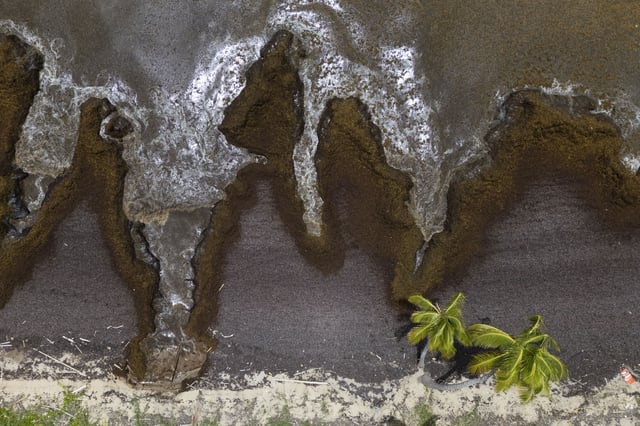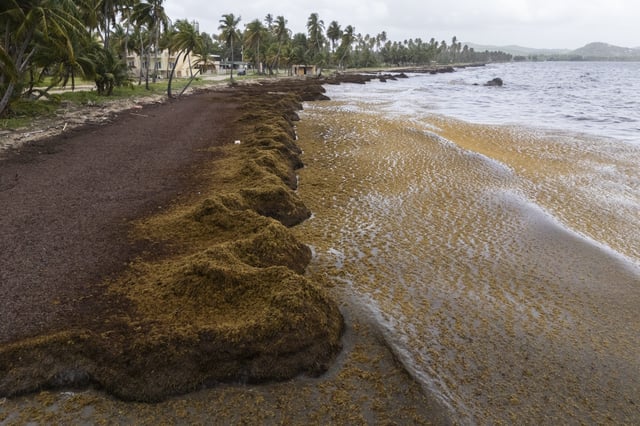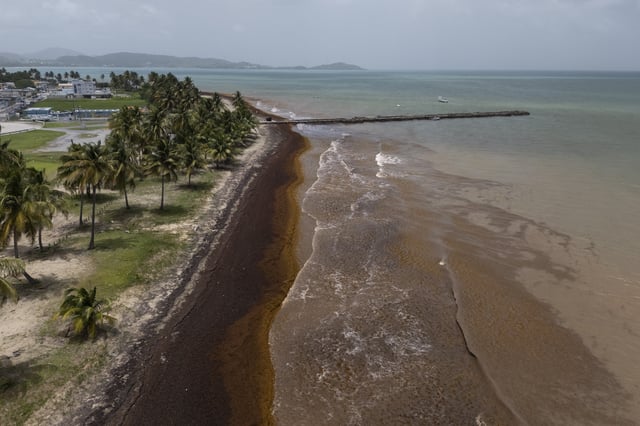Overview
- A University of South Florida report found May’s 38 million metric tons of sargassum is the largest volume recorded in the Atlantic, Gulf of Mexico and Caribbean since monitoring began in 2011.
- Massive algae mats are smothering coral reefs and seagrass beds, killing shoreline wildlife and emitting ammonia and hydrogen sulfide gases that closed a school in Martinique.
- Scientists say the causes of the sargassum boom remain unclear but suspect agricultural runoff, warmer ocean temperatures and shifting winds and currents are driving the growth.
- Mitigation efforts vary widely: Punta Cana has invested in floating sea barriers, St. Maarten is using backhoes for emergency clean-ups, and French Caribbean territories plan to employ storage barges and a specialized collection vessel.
- Clean-up operations face environmental and financial hurdles as heavy machinery risks disturbing sea turtle nests and many small islands rely on hotel-led removals due to limited public budgets.



